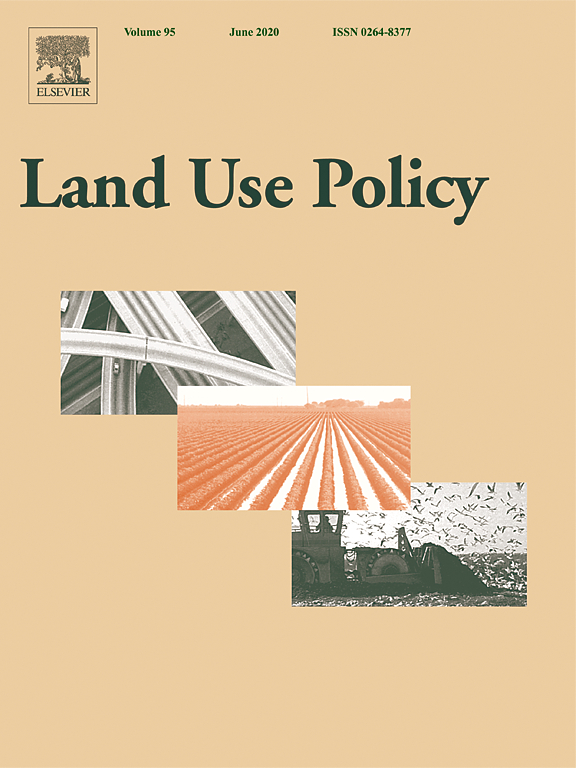Location
Land Use Policy is an international and interdisciplinary journal concerned with the social, economic, political, legal, physical and planning aspects of urban and rural land use. It provides a forum for the exchange of ideas and information from the diverse range of disciplines and interest groups which must be combined to formulate effective land use policies. The journal examines issues in geography, agriculture, forestry, irrigation, environmental conservation, housing, urban development and transport in both developed and developing countries through major refereed articles and shorter viewpoint pieces.
Land Use Policy aims to provide policy guidance to governments and planners and it is also a valuable teaching resource.
ISSN: 0264-8377
Members:
Resources
Displaying 21 - 25 of 279An integrated approach for the estimation of agricultural drought costs
This study proposes a novel method to assess the overall economic effects of agricultural droughts using a coupled agronomic-economic approach that accounts for the direct and indirect impacts of this hazard in the economy. The proposed methodology is applied to Italy, where years showing different drought severity levels were analysed. Agricultural drought stress was measured using the fraction of Absorbed Photosynthetically Active Radiation (fAPAR).
The impacts of Acacia decurrens plantations on livelihoods in rural Ethiopia
This study was undertaken to examine local perceptions of the impacts of small-scale tree plantations, notably of Acacia decurrens (J.C. Wendl.) Willd., in Ethiopia’s Upper Blue Nile Basin. A particular focus of our study was on the different dimensions of livelihood sustainability centering on economic, social, human, physical, and natural capital. The unprecedented expansion of small-scale tree plantations in degraded agricultural land can be attributed to farmers’ efforts to overcome the problems of limited income options and land degradation.
Understanding support for regulatory approaches to wildfire management and performance of property mitigations on private lands
Formal regulation of private property and exploration of “risk transmission” across ownerships are two popular means for addressing wildfire management at landscape scales. However, existing studies also indicate that a number of barriers exist for implementing formal regulations surrounding wildfire risk, and that few efforts gauge influences on the resident support that serves as an important antecedent to implementation.
Environmental drivers and sustainable transition of dachas in Eastern Europe: An analytical overview
Dachas (collective gardens with summer houses in post-Soviet countries) is one of the most common features of peri-urban landscapes within the region that is the erstwhile USSR, with dacha conglomerates constituting half of the areas in the exurbs of major cities. In Belarus, Russia and Ukraine dachas largely preserved their original form and function. Arguably, they are at the turning point now, and can be further transformed sustainably if appropriate incentive structures will be created within national governance systems.
Nexus between nature-based solutions, ecosystem services and urban challenges
Nature-based Solutions (NBS) are increasingly promoted to support sustainable and resilient urban planning. However, design and planning urban NBS targeted at the needs of the local context require knowledge about the causal relationships between NBS, ecosystem services (ES) and urban challenges (UC) This paper aims at contributing to this knowledge, by systematically identifying nexuses (i.e. qualitative links) between UC, ES and NBS, and describing plausible causal relationships.



